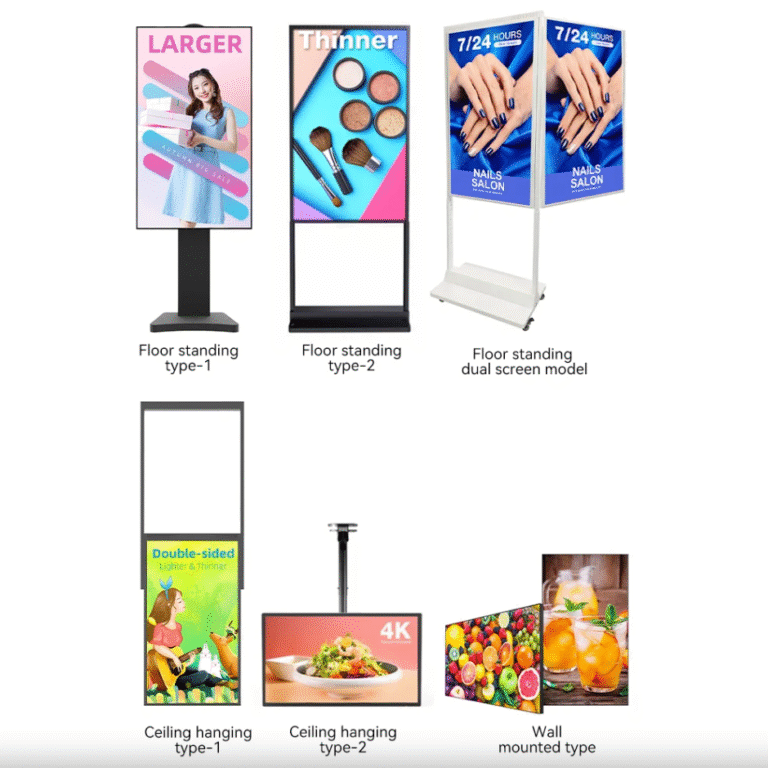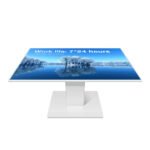Is Digital Signage the Future of Retail Engagement?
Is Digital Signage Retail an Essential Investment for Modern Stores?
The retail landscape is undergoing a profound transformation, moving rapidly from passive display to dynamic, interactive engagement. At the heart of this evolution lies digital signage retail, a technology that is fundamentally reshaping how brands communicate with their customers at the physical point of sale. This shift is not merely an aesthetic upgrade; rather, it is a strategic necessity for businesses aiming to thrive in a competitive, omnichannel world. For digital signage product users, understanding the depth and versatility of this application is crucial to maximizing their return on investment. The transition from static posters to vibrant, real-time displays offers unprecedented opportunities to capture attention, inform decisions, and ultimately, drive sales. Digital signage retail is truly emerging as the cornerstone of the next-generation in-store experience.
Understanding the Core Value Proposition of Digital Signage Retail

The primary function of digital signage in a retail environment extends far beyond simply showing advertisements. Fundamentally, it serves as a dynamic communication hub, capable of delivering highly targeted and contextually relevant content. This dynamic capability is a massive advantage over traditional print materials, which are static and costly to update. Digital signage retail solutions, in contrast, allow for instantaneous content changes, facilitating agile marketing campaigns that respond to current stock levels, weather conditions, time of day, or specific in-store events.
Moreover, these systems significantly enhance the overall brand experience. High-definition screens displaying stunning visuals create a modern, high-tech atmosphere that resonates with today’s digitally savvy consumers. Consequently, a more engaging environment is created for the shopper. It is also important to note that the efficiency gains are substantial. For instance, large-scale promotions can be deployed across hundreds of stores simultaneously from a central location, drastically reducing the labor and printing costs associated with traditional signage. This consolidation of communication tools means that resources can be better allocated to core business activities.
Key Features and Applications: Driving Engagement and Sales
The practical applications of digital signage retail are diverse and powerful, addressing critical pain points for both retailers and customers.
Enhanced Product Discovery and Information: Digital screens, particularly those deployed near products, can display detailed specifications, video demonstrations, customer reviews, and comparative information. This is particularly useful for complex items like electronics or high-end cosmetics, where shoppers often require extensive data before making a purchase. Instead of relying solely on sales associates, customers are empowered with self-service information, which significantly improves their shopping journey. Interactive kiosks further enable customers to browse entire catalogs, check inventory, and even order items that are out of stock for home delivery.
Dynamic Promotion and Merchandising: The ability to schedule and automate content delivery is a game-changer for merchandising. Content can be tailored for peak hours, weekends, or specific holidays. For example, a coffee shop’s menu board can automatically switch to lunch specials at noon and back to evening drinks later on. This level of precision ensures that the most relevant message is presented to the customer at the optimal time, thereby maximizing the likelihood of a conversion. Furthermore, visually appealing content is used to draw attention to high-margin products or clear out old inventory swiftly.
Streamlining the Customer Journey: Digital queue management systems and informational displays are commonly utilized to reduce perceived wait times and improve operational flow. In busy environments like banks or large department stores, touch-screen directories help customers navigate the space efficiently. This reduces customer frustration and frees up staff to focus on higher-value interactions, rather than simply giving directions. The overall effect is a smoother, more pleasurable shopping experience that encourages repeat visits.
Technical Considerations for Product Users: Maximizing Your System

For users managing digital signage products, a few technical and strategic considerations are paramount to success.
Content Management System (CMS) Selection: The CMS is the backbone of any effective digital signage retail deployment. A robust system should offer an intuitive user interface, allowing for easy scheduling, content creation, and remote diagnostics. Cloud-based CMS solutions are often preferred because they provide scalability and reliable, real-time updates across a geographically dispersed network of screens. Furthermore, the ability to integrate with existing POS (Point of Sale) and inventory systems is crucial for displaying accurate, real-time pricing and stock information.
Hardware and Placement Strategy: The choice of screen hardware (e.g., standard LCD, LED, interactive touchscreens) must align with the environment and intended purpose. Screens placed in windows must be high-brightness to combat direct sunlight, while interactive kiosks need durable, tamper-resistant enclosures. Strategic placement is equally important. Screens should be positioned in high-traffic areas, at comfortable viewing heights, and where the content directly supports the customer’s activity, such as at the entrance (for wayfinding), near fitting rooms (for cross-selling suggestions), or at the checkout (for impulse buys).
Data Analytics and Integration: The true power of modern digital signage retail systems lies in their ability to capture and analyze data. Using features like anonymous audience measurement (via built-in cameras or sensors), retailers can gain insights into content effectiveness, viewer demographics, and dwell times. This feedback loop is invaluable, enabling data-driven adjustments to content and scheduling, ensuring that the system is constantly optimized for maximum impact.
The Ethical and Social Responsibility of Digital Signage
While the commercial advantages of digital signage retail are clear, its deployment must be grounded in ethical considerations and positive social values. The power of dynamic content should be wielded responsibly. This means prioritizing transparency and avoiding manipulative practices. Screens should primarily provide valuable, non-intrusive information that enhances the consumer’s experience, rather than overwhelming them with aggressive, rapid-fire advertisements. Furthermore, the commitment to responsible energy consumption is critical; utilizing energy-efficient displays and adopting practices that turn off screens during non-business hours reflect a positive, sustainable brand identity. Digital signage retail has the capacity to be an engaging and powerful tool when used thoughtfully and with respect for the user experience.
Conclusion: The Indispensable Role of Digital Signage Retail
The question is no longer whether digital signage will be a part of the retail future, but rather how integrated and sophisticated its role will become. Digital signage retail is an indispensable technology that empowers brands to create fluid, personalized, and measurable in-store experiences. For product users, mastering the deployment of these systems—from content creation and scheduling to hardware selection and data analysis—is the key to unlocking significant competitive advantage. By focusing on providing real value to the customer and embracing technological integration, digital signage will continue to define the successful brick-and-mortar store in the years ahead.
Frequently Asked Questions (FAQ)
Q1: How can digital signage directly impact retail sales? A: Digital signage retail directly impacts sales by utilizing dynamic pricing and real-time promotions to encourage impulse purchases, offering cross-selling and up-selling suggestions near relevant products, and providing persuasive video demonstrations that lead to higher purchase confidence.
Q2: Is digital signage difficult to manage without a dedicated IT team? A: Modern, cloud-based Content Management Systems (CMS) for digital signage retail are designed to be user-friendly, allowing non-technical staff to schedule content, manage playlists, and monitor screen status remotely with minimal training.
Q3: What are the typical costs associated with digital signage retail? A: The costs vary widely but generally include hardware (screens, media players, mounts), software licenses (CMS), installation, and content creation. While the initial investment is higher than print, the long-term operational savings and sales boost often provide a strong ROI.




